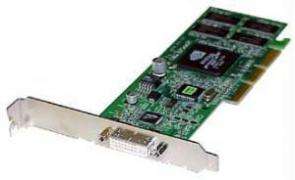2006 graphic cards debut new technology

It began with a straight line and grew from there. At the dawn of the 1970s a few rectangles, when properly animated on a television screen, were used to create the groundbreaking video game "Pong." From there, the medium grew. Additional blocks could be used to create intricate, ever-realistic character models while smaller blocks, or pixels, allowed for even greater levels of detail.
At the start of 2006 creating an image using computer technologies has taken on entirely new methods. Where once artists, engineers and video-game designers worried about decreasing the size of available pixels to be able to create a fairly realistic model, concerns have shifted.
Computer-processing technologies, which once had to be taken into careful account before placing too heavy a graphical load upon them, have advanced. Graphic cards have stepped up to assist with these tasks thanks to onboard processors capable of handling the massive computations required. Where once the focus was on making a mostly realistic character model for a game, the current task is to recreate as realistic a world as possible: light, physics, movement, and reactions, as well as character models.
The task of making an elegant image that does not stress resources has been achieved. This year the goal seems to be to heighten subtlety and immersion within a video game or graphical environment. PixelShader 3, a developing graphics technology, promises to help.
Essentially a set of underlying rules as to how visual and physical elements behave within an environment, PixelShader 3 allows for more realistic occurrences within a game. The technology, which utilizes pixel shaders, allows pixels to act as small, independent programs. Once initialized, the program can branch out and make decisions as to what functions to perform next.
Nuances such as the foam and spray a body of water might throw as it hits an object, miniature shockwaves surrounding an object moving at high speed, the appearance of gassy/distorted air where a heat source may be emanating, additional texture depth, more accurate light reflections from a surface and a better idea as to how reflective a given surface should be are examples of areas improved upon with this technology.
Additional improvements throughout 2006 will include PixelShader 4, which steps up PixelShader 3's use of pixel-shader systems and adds support for vertex shaders and allows for additional realism and flexibility within an image. With vertex shaders, fire and water move realistically while a fog effect might layer a hill more believably. Correct use of a vertex-shader system might allow for a more realistic human expression within a game, such as a wince or a smile while allowing up to hundreds of characters on a screen without bogging down the system under heavy computational tasks.
The small screen seems to be a key market in 2006, with graphics cards being developed for the cell phone and PDA markets.
"You're going to see a lot of advancements there," said Chris Evenden, director of public relations for ATI Technologies, a graphics-card manufacturer. "We were demonstrating cards on cell phones that are equivalent to the technology of three to four years ago on the PC."
Evenden highlighted the push toward 3D environments for handheld device interfaces, despite the smaller size of the devices as well as heat and energy restrictions that come with such territory.
"The Xbox 360 is going to be an interesting indicator of the way things will go," said Evenden, citing Microsoft's recently released video-game console. The device features a well-received ATI video card with PixelShader 3 and 4 support as well as faster data-processing features. Support for these technologies will also be seen this year in ATI's Radeon X1000 graphics-card series as well as rival graphics-card maker NVIDIA's GeForce 7 card series.
Graphics cards generally retail between $80 and $600, depending on features and specifications.
Copyright 2006 by United Press International

















